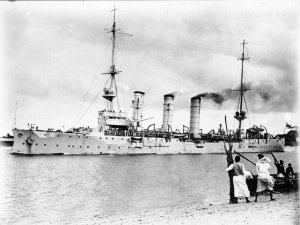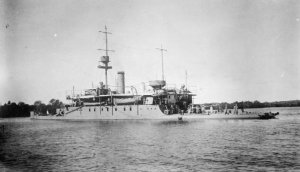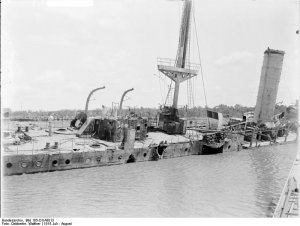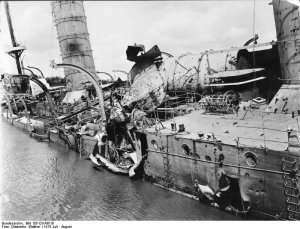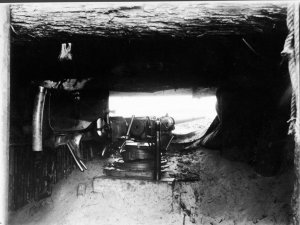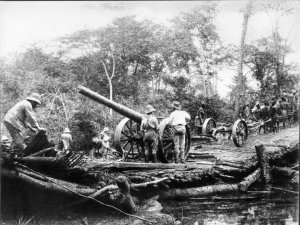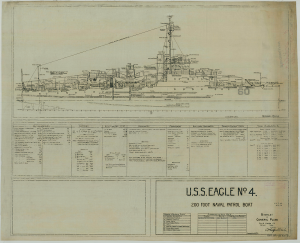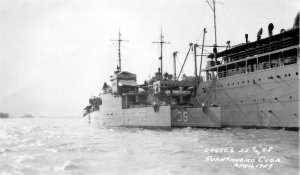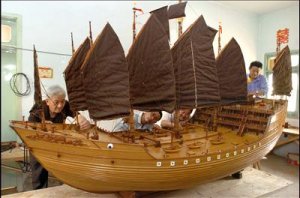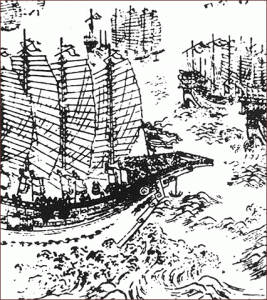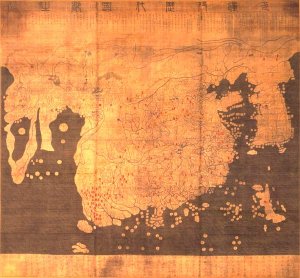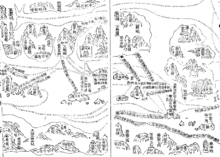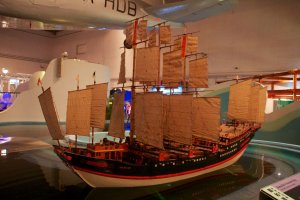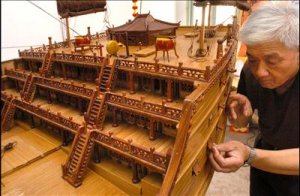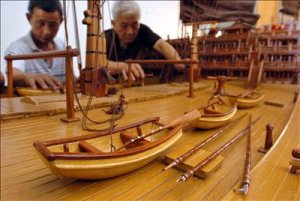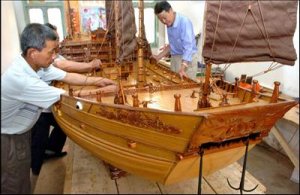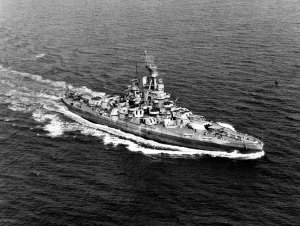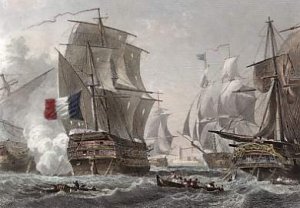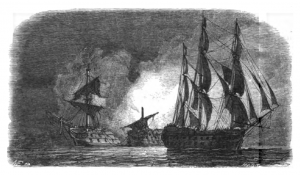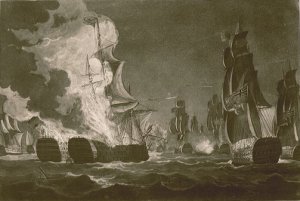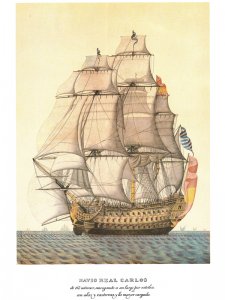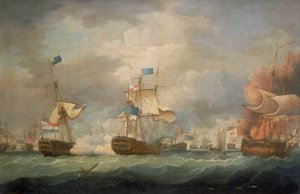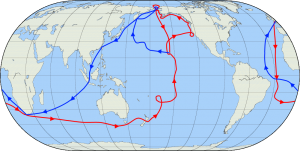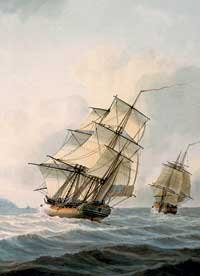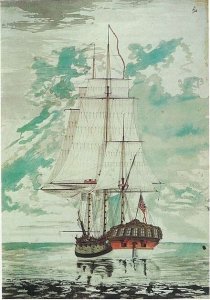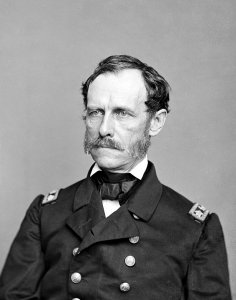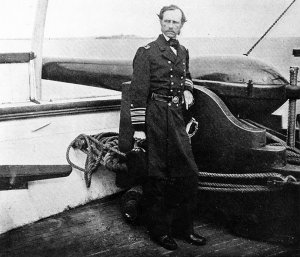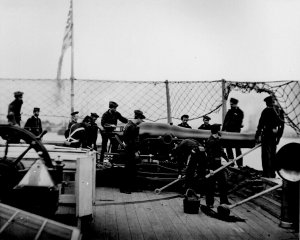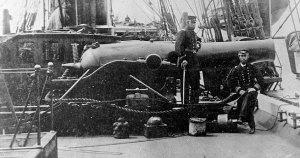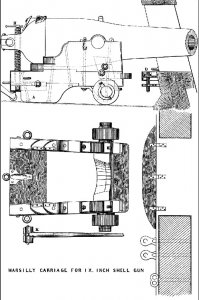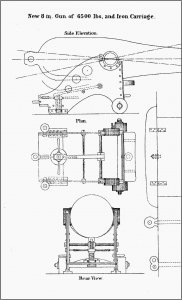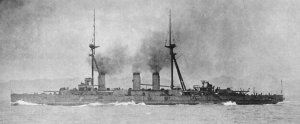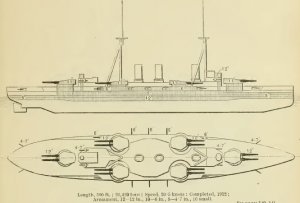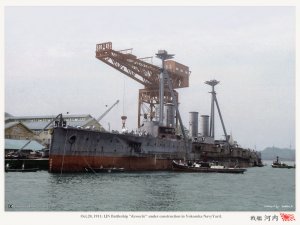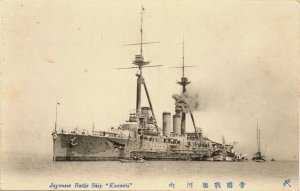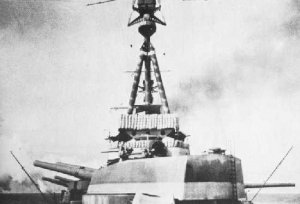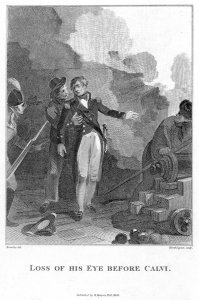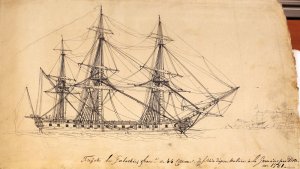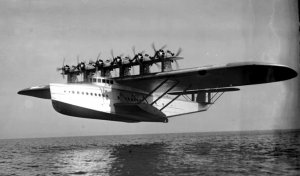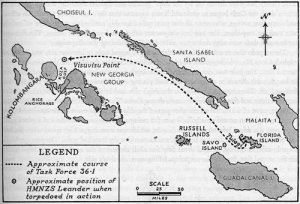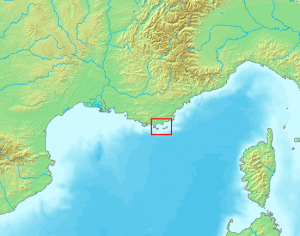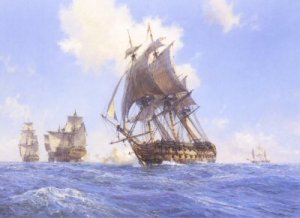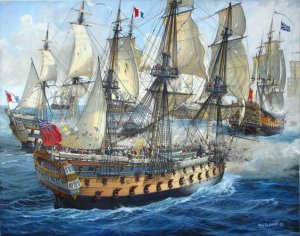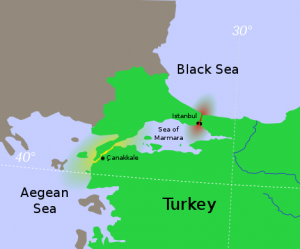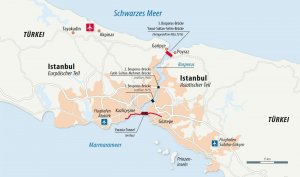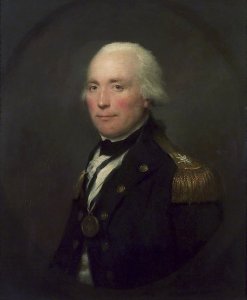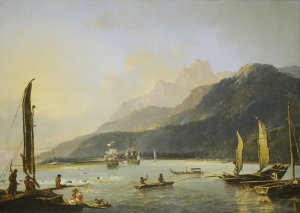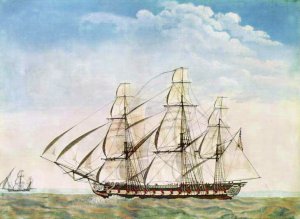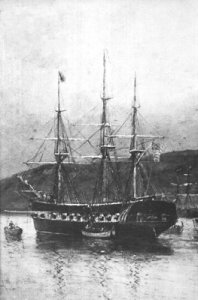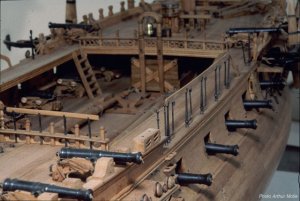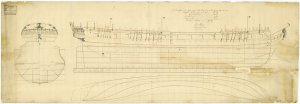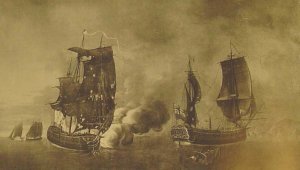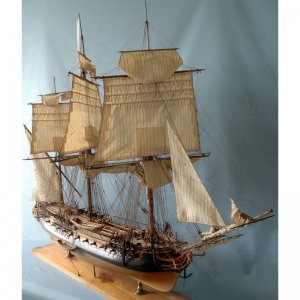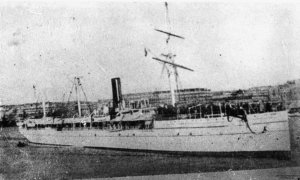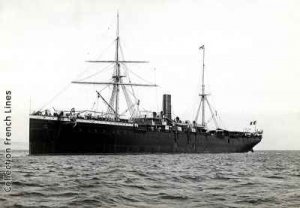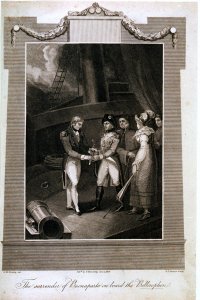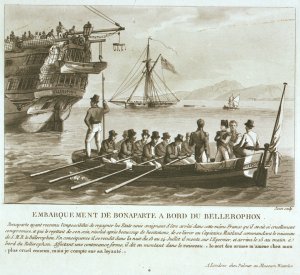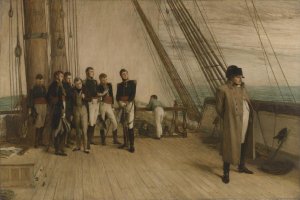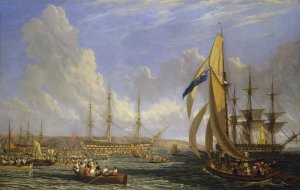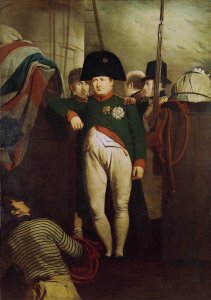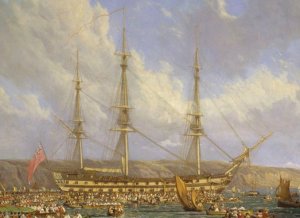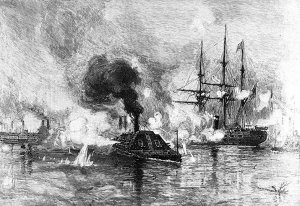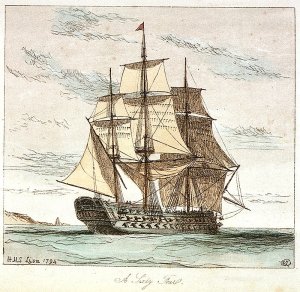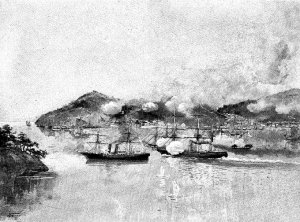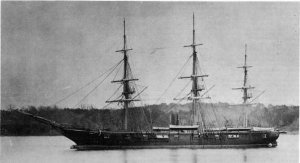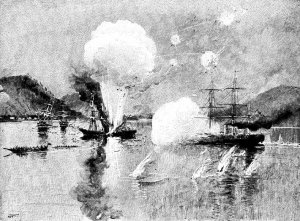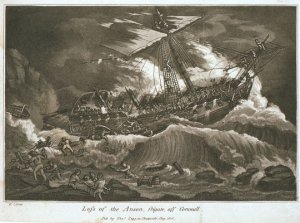11 July 1882 - The Bombardment of Alexandria in Egypt by the British Mediterranean Fleet took place on 11–13 July 1882.
Admiral Beauchamp Seymour was in command of a fleet of fifteen Royal Navy ironclad ships which had previously sailed to the harbor of Alexandria to support the khedive Tewfik Pasha amid Ahmed ‘Urabi's nationalist uprising against his administration and its close ties to British and French financiers. He was joined in the show of force by a French flotilla as well. The move provided some security to the khedive, who withdrew his court to the now-protected port, but strengthened ‘Urabi's nationalists within the army and throughout the remainder of Egypt. On 11 June, anti-Christian riots began in Alexandria. The city's European residents fled and the Egyptian ‘Urabist army began fortifying and arming the harbor.
An ultimatum to cease this build-up being refused, the British fleet began a 10½-hour bombardment of the city without French assistance. Historians argue about whether Admiral Seymour exaggerated the threat from the Egyptian batteries at Alexandria in order to force the hand of a reluctant Gladstone administration. Once the British had attacked the city, they then proceeded to a full-scale invasion to restore the authority of the khedive. Egypt remained under British occupation until 1956.
The ultimatum, which was ignored amid denials of the defensive works by the Egyptian governor, was set to expire at 7:00 am on 11 July.
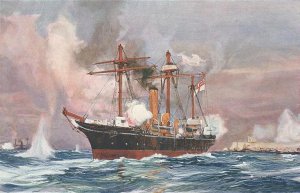
"Well Done Condor" by Charles Dixon.
The Bombardment
At 7:00 a.m. on 11 July 1882 Admiral Seymour aboard HMS Invincible signaled to HMS Alexandra to commence firing at the Ras El Tin fortifications followed by the general order to attack the enemy's batteries. According to Royle, "[a] steady cannonade was maintained by the attacking and defending forces, and for the next few hours the roar of the guns and the shrieks of passing shot and shell were alone audible." The attack was carried out by the off-shore squadron as it was underway, the ships turning from time to time to keep up the barrage. This was not entirely effective and by 9:40, HMS Sultan, HMS Superb and HMS Alexandra anchored off the Lighthouse Fort and concentrated their now-stationary batteries on Ras El Tin. The fort battery was able to score hits, particularly on Alexandra, but by 12:30, Inflexible had joined the attack and the fort's guns were silenced.
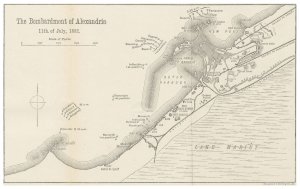
Plan of the Bombardement
Meanwhile, HMS Temeraire had taken on the Mex Forts (with Invincible splitting its broadsides between Ras El Tin and Mex) and was causing damage to Mex when she grounded on a reef. The gunboat HMS Condor(Beresford) went to her assistance and she was refloated and resumed the attack on the Mex fort. While the off-shore squadron was engaging the forts at long-range, HMS Monarch, HMS Penelope and HMS Condor was ordered into close engagements with the forts at Maza El Kanat and Fort Marabout.
HMS Condor seeing that Invincible was within range of the guns at Fort Marabout sailed to within 1,200 feet of the fort and began furiously firing at the fort. When Fort Marabout's guns were disabled, the flagship signaled "Well Done, Condor." The Condor's action allowed the ships to finish off Fort Mex.
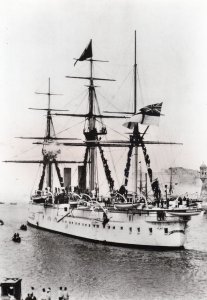
HMS Alexandra (1875) at Malta after 1886 when she had been painted white at the request of HRH the Duke of Edinburgh whose flag she wears.
With the Mex Fort's guns silenced, HMS Sultan signaled to Invincible to attack Fort Adda, which she did with the assistance of Temeraire. At 1:30, a lucky shell from HMS Superb blew up the magazine of Fort Adda and those batteries ceased firing. At about this time, the British fleet began to run short of ammunition. However, nearly all of the guns from Fort Adda west were silenced. HMS Superb, Inflexible and Temeraire focused their fire on the remaining eastern forts until at 5:15, the general order to cease fire was issued. The Egyptians, both outmanned and outgunned had used their firepower to good effect, but the outcome of the bombardment had never been in doubt. The Cairo newspaper El Taif erroneously reported that the Egyptian forts had sunk three ships.
The next day, HMS Temeraire reconnoitered the forts and discovered that the Hospital battery had reconstituted its defences. At 10:30 a.m., Temeraire and Inflexible opened fire and the battery raised the flag of truce at 10:48 a.m. Very soon an Egyptian boat set out to the flagship bearing the flag of truce and a cease-fire was ordered. By 2:50 p.m., HMS Bittern signaled that the negotiations had failed and the bombardment was to resume. Still, most of the forts flew white flags and an irregular cannonade by the British fleet began.
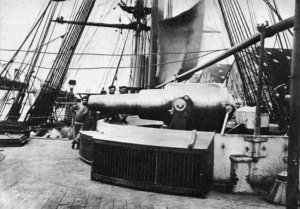
One of HMS Temeraire's 11 inch 25-ton disappearing muzzle-loading rifles. HMS Alexandra shelled the forts with similar guns.
By 4:00 p.m. a fire had broken out on shore, and by evening the fire had engulfed the wealthiest quarter of Alexandria, the area predominantly inhabited by Europeans. The fire raged for the next two days before it burned itself out. Admiral Seymour, unsure of the situation in the city didn't land any troops to take control of the city or fight the fire. It was not until 14 July that British marines and sailors landed in Alexandria.
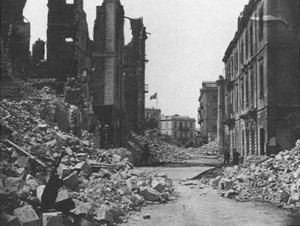
Photo in Alexandria after the bombardment and fire of 11–13 July 1882.
British Ships involved:
Battleships
HMS Alexandra
HMS Superb
HMS Sultan
HMS Temeraire
HMS Inflexible
HMS Monarch
HMS Invincible
HMS Penelope
Torpedo boat
HMS Hecla
Despatch boat
HMS Helicon
Gunvessels
HMS Condor
HMS Bittern
HMS Beacon
HMS Cygnet
HMS Decoy
https://en.wikipedia.org/wiki/Bombardment_of_Alexandria
Admiral Beauchamp Seymour was in command of a fleet of fifteen Royal Navy ironclad ships which had previously sailed to the harbor of Alexandria to support the khedive Tewfik Pasha amid Ahmed ‘Urabi's nationalist uprising against his administration and its close ties to British and French financiers. He was joined in the show of force by a French flotilla as well. The move provided some security to the khedive, who withdrew his court to the now-protected port, but strengthened ‘Urabi's nationalists within the army and throughout the remainder of Egypt. On 11 June, anti-Christian riots began in Alexandria. The city's European residents fled and the Egyptian ‘Urabist army began fortifying and arming the harbor.
An ultimatum to cease this build-up being refused, the British fleet began a 10½-hour bombardment of the city without French assistance. Historians argue about whether Admiral Seymour exaggerated the threat from the Egyptian batteries at Alexandria in order to force the hand of a reluctant Gladstone administration. Once the British had attacked the city, they then proceeded to a full-scale invasion to restore the authority of the khedive. Egypt remained under British occupation until 1956.
The ultimatum, which was ignored amid denials of the defensive works by the Egyptian governor, was set to expire at 7:00 am on 11 July.

"Well Done Condor" by Charles Dixon.
The Bombardment
At 7:00 a.m. on 11 July 1882 Admiral Seymour aboard HMS Invincible signaled to HMS Alexandra to commence firing at the Ras El Tin fortifications followed by the general order to attack the enemy's batteries. According to Royle, "[a] steady cannonade was maintained by the attacking and defending forces, and for the next few hours the roar of the guns and the shrieks of passing shot and shell were alone audible." The attack was carried out by the off-shore squadron as it was underway, the ships turning from time to time to keep up the barrage. This was not entirely effective and by 9:40, HMS Sultan, HMS Superb and HMS Alexandra anchored off the Lighthouse Fort and concentrated their now-stationary batteries on Ras El Tin. The fort battery was able to score hits, particularly on Alexandra, but by 12:30, Inflexible had joined the attack and the fort's guns were silenced.

Plan of the Bombardement
Meanwhile, HMS Temeraire had taken on the Mex Forts (with Invincible splitting its broadsides between Ras El Tin and Mex) and was causing damage to Mex when she grounded on a reef. The gunboat HMS Condor(Beresford) went to her assistance and she was refloated and resumed the attack on the Mex fort. While the off-shore squadron was engaging the forts at long-range, HMS Monarch, HMS Penelope and HMS Condor was ordered into close engagements with the forts at Maza El Kanat and Fort Marabout.
HMS Condor seeing that Invincible was within range of the guns at Fort Marabout sailed to within 1,200 feet of the fort and began furiously firing at the fort. When Fort Marabout's guns were disabled, the flagship signaled "Well Done, Condor." The Condor's action allowed the ships to finish off Fort Mex.

HMS Alexandra (1875) at Malta after 1886 when she had been painted white at the request of HRH the Duke of Edinburgh whose flag she wears.
With the Mex Fort's guns silenced, HMS Sultan signaled to Invincible to attack Fort Adda, which she did with the assistance of Temeraire. At 1:30, a lucky shell from HMS Superb blew up the magazine of Fort Adda and those batteries ceased firing. At about this time, the British fleet began to run short of ammunition. However, nearly all of the guns from Fort Adda west were silenced. HMS Superb, Inflexible and Temeraire focused their fire on the remaining eastern forts until at 5:15, the general order to cease fire was issued. The Egyptians, both outmanned and outgunned had used their firepower to good effect, but the outcome of the bombardment had never been in doubt. The Cairo newspaper El Taif erroneously reported that the Egyptian forts had sunk three ships.
The next day, HMS Temeraire reconnoitered the forts and discovered that the Hospital battery had reconstituted its defences. At 10:30 a.m., Temeraire and Inflexible opened fire and the battery raised the flag of truce at 10:48 a.m. Very soon an Egyptian boat set out to the flagship bearing the flag of truce and a cease-fire was ordered. By 2:50 p.m., HMS Bittern signaled that the negotiations had failed and the bombardment was to resume. Still, most of the forts flew white flags and an irregular cannonade by the British fleet began.

One of HMS Temeraire's 11 inch 25-ton disappearing muzzle-loading rifles. HMS Alexandra shelled the forts with similar guns.
By 4:00 p.m. a fire had broken out on shore, and by evening the fire had engulfed the wealthiest quarter of Alexandria, the area predominantly inhabited by Europeans. The fire raged for the next two days before it burned itself out. Admiral Seymour, unsure of the situation in the city didn't land any troops to take control of the city or fight the fire. It was not until 14 July that British marines and sailors landed in Alexandria.

Photo in Alexandria after the bombardment and fire of 11–13 July 1882.
British Ships involved:
Battleships
HMS Alexandra
HMS Superb
HMS Sultan
HMS Temeraire
HMS Inflexible
HMS Monarch
HMS Invincible
HMS Penelope
Torpedo boat
HMS Hecla
Despatch boat
HMS Helicon
Gunvessels
HMS Condor
HMS Bittern
HMS Beacon
HMS Cygnet
HMS Decoy
https://en.wikipedia.org/wiki/Bombardment_of_Alexandria




